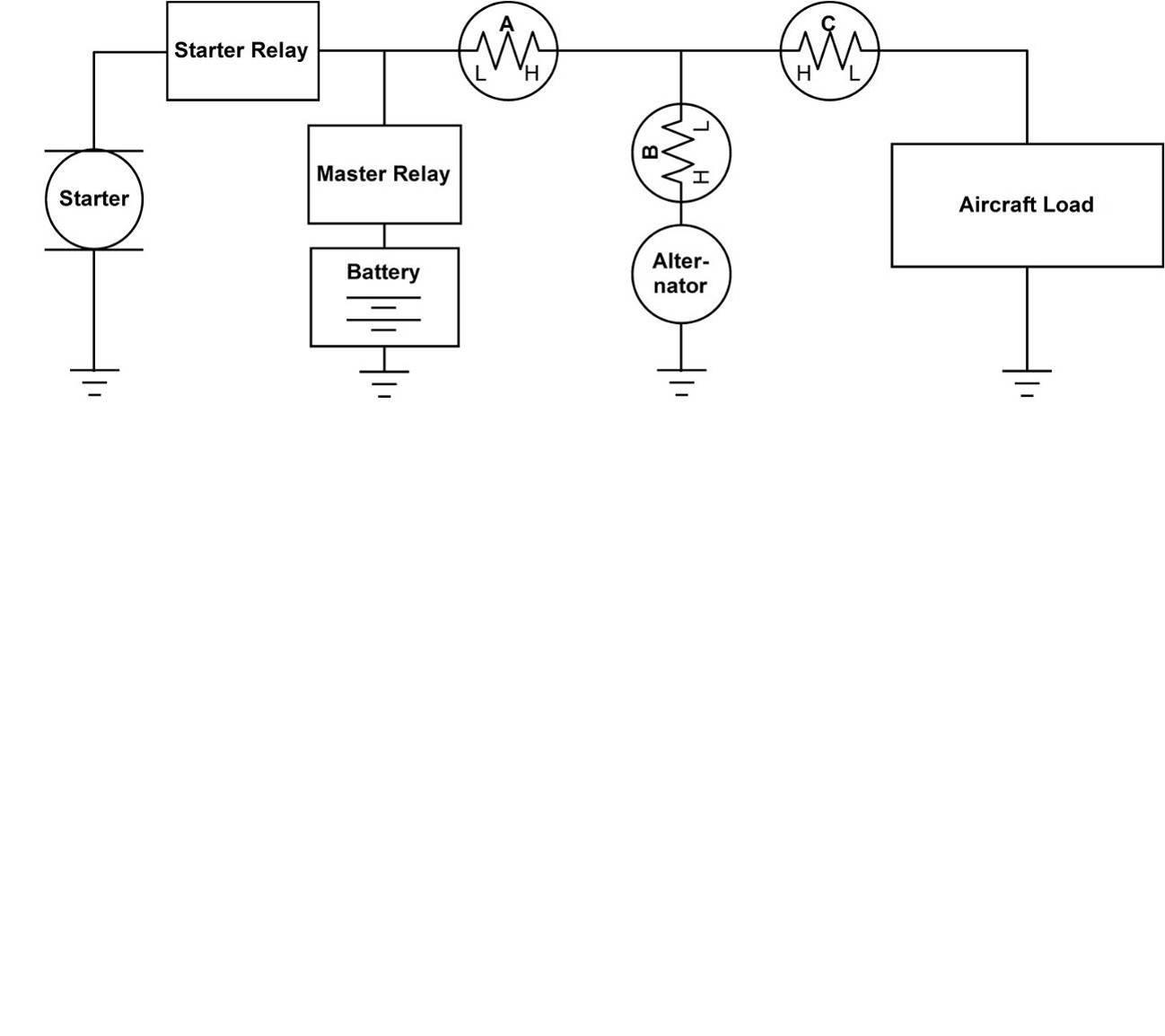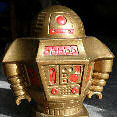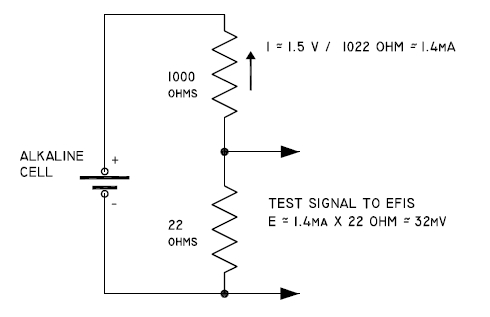 |
Matronics Email Lists
Web Forum Interface to the Matronics Email Lists
|
| View previous topic :: View next topic |
| Author |
Message |
Paul Valovich
Joined: 11 Jan 2006
Posts: 75
|
 Posted: Sat Aug 09, 2014 8:18 am Post subject: Shunt Questions Posted: Sat Aug 09, 2014 8:18 am Post subject: Shunt Questions |
 |
|
RV-8A, 420 total hours. Electrical design based on Z13/8 architecture. AFS 4500 EFIS taking ammeter current readings from 50 MV / 60 amp shunt.
Ammeter reading suddenly became very intermittent – mostly inop. Replaced wires, D-sub pins, connectors. Extensive troubleshooting with Advanced Flight Systems has led to questions about whether shunt is working properly.
How does one troubleshoot a shunt? No moving parts; no visible damage; All other electrical systems operating normally.
Paul Valovich
Ridgecrest, CA
N192NM
[quote][b]
| | - The Matronics AeroElectric-List Email Forum - | | | Use the List Feature Navigator to browse the many List utilities available such as the Email Subscriptions page, Archive Search & Download, 7-Day Browse, Chat, FAQ, Photoshare, and much more:
http://www.matronics.com/Navigator?AeroElectric-List |
|
|
|
| Back to top |
|
 |
enginerdy(at)gmail.com
Guest
|
 Posted: Sat Aug 09, 2014 8:45 am Post subject: Shunt Questions Posted: Sat Aug 09, 2014 8:45 am Post subject: Shunt Questions |
 |
|
Could you hook it up temporarily to a good quality volt meter (at the remote end)?
That could help eliminate some things.
Daniel Hooper
On Aug 9, 2014, at 11:16 AM, "Valovich, Paul" <pvalovich(at)dcscorp.com (pvalovich(at)dcscorp.com)> wrote:
[quote] <![endif]--> <![endif]-->
RV-8A, 420 total hours. Electrical design based on Z13/8 architecture. AFS 4500 EFIS taking ammeter current readings from 50 MV / 60 amp shunt.
Ammeter reading suddenly became very intermittent – mostly inop. Replaced wires, D-sub pins, connectors. Extensive troubleshooting with Advanced Flight Systems has led to questions about whether shunt is working properly.
How does one troubleshoot a shunt? No moving parts; no visible damage; All other electrical systems operating normally.
Paul Valovich
Ridgecrest, CA
N192NM
| Quote: |
D=3D=3D=3D=3D=3D=3D=3D=3D=3D=3D=3D=3D=3D=3D=3D=3D=3D=3D=3D=3D=3D=3D=3D=3D=3D=3D=3D=3D=3D=3D=3D=3D=3D=3D=3D=3D=3D=3D=3D=3D=3D=3D=3D=3D=3D
lectric-List"">http://www.matronics.com/Navigator?AeroElectric-List
D=3D=3D=3D=3D=3D=3D=3D=3D=3D=3D=3D=3D=3D=3D=3D=3D=3D=3D=3D=3D=3D=3D=3D=3D=3D=3D=3D=3D=3D=3D=3D=3D=3D=3D=3D=3D=3D=3D=3D=3D=3D=3D=3D=3D=3D
//forums.matronics.com
D=3D=3D=3D=3D=3D=3D=3D=3D=3D=3D=3D=3D=3D=3D=3D=3D=3D=3D=3D=3D=3D=3D=3D=3D=3D=3D=3D=3D=3D=3D=3D=3D=3D=3D=3D=3D=3D=3D=3D=3D=3D=3D=3D=3D=3D
ot;">http://www.matronics.com/contribution
D=3D=3D=3D=3D=3D=3D=3D=3D=3D=3D=3D=3D=3D=3D=3D=3D=3D=3D=3D=3D=3D=3D=3D=3D=3D=3D=3D=3D=3D=3D=3D=3D=3D=3D=3D=3D=3D=3D=3D=3D=3D=3D=3D=3D=3D
|
[b]
| | - The Matronics AeroElectric-List Email Forum - | | | Use the List Feature Navigator to browse the many List utilities available such as the Email Subscriptions page, Archive Search & Download, 7-Day Browse, Chat, FAQ, Photoshare, and much more:
http://www.matronics.com/Navigator?AeroElectric-List |
|
|
|
| Back to top |
|
 |
jluckey(at)pacbell.net
Guest
|
 Posted: Sat Aug 09, 2014 9:11 am Post subject: Shunt Questions Posted: Sat Aug 09, 2014 9:11 am Post subject: Shunt Questions |
 |
|
How does one troubleshoot a shunt?
Great question - shunts are about as "solid-state" as they come.
Based on you conversations w/ Advanced, we assume that it's not something in their system. Have you tried swapping-in a known-good shunt?
As you may already know, a shunt is really just a highly-calibrated, very low-resistance resistor. On many shunts the main element is soldered between the connection posts. I'm wondering if there is some kind of mechanical problem in there somewhere. I assume there are no visible cracks or other damage.
To test a shunt you could:
1. hook-up a test circuit (on the bench) with a battery and some small load - maybe a couple of automotive brake lights (or equivalent). You want a load of around 5 amps for this test.
2. Hook-up a DVM to the shunt on the mili-volt scale. Your shunt you should be reading just about 1 mV per Amp of current in the circuit. (technically that's 5/6 mV per Amp, but that's really splitting hairs)
3. While the circuit is on, agitate the shunt: bang in on the bench top or hit it w/ a plastic mallet and see if the reading remains steady. Perhaps some part of the shunt is damaged/cracked and it is having intermittent connection problems. (you will want to have good solid connections on the shunt terminals for this test - alligator clips probably won't do it)
4. It would be fun to test w/ high load, something like 40-50 amps, but I can't think of an easy way to create a load like that - maybe other Listers have some ideas...
Good Luck & keep us posted,
-Jeff
On Saturday, August 9, 2014 9:28 AM, "Valovich, Paul" <pvalovich(at)dcscorp.com> wrote:
RV-8A, 420 total hours. Electrical design based on Z13/8 architecture. AFS 4500 EFIS taking ammeter current readings from 50 MV / 60 amp shunt.
Ammeter reading suddenly became very intermittent – mostly inop. Replaced wires, D-sub pins, connectors. Extensive troubleshooting with Advanced Flight Systems has led to questions about whether shunt is working properly.
How does one troubleshoot a shunt? No moving parts; no visible damage; All other electrical systems operating normally.
Paul Valovich
Ridgecrest, CA
N192NM
| Quote: | http://www.matronics." class="" rel="nofollow" target="_blank" href="http://forums.matroollow" target="_blank" href="http://www.matronics.com/contribution">htt
|
[quote][b]
| | - The Matronics AeroElectric-List Email Forum - | | | Use the List Feature Navigator to browse the many List utilities available such as the Email Subscriptions page, Archive Search & Download, 7-Day Browse, Chat, FAQ, Photoshare, and much more:
http://www.matronics.com/Navigator?AeroElectric-List |
|
|
|
| Back to top |
|
 |
nuckolls.bob(at)aeroelect
Guest
|
 Posted: Sat Aug 09, 2014 11:33 am Post subject: Shunt Questions Posted: Sat Aug 09, 2014 11:33 am Post subject: Shunt Questions |
 |
|
At 12:10 PM 8/9/2014, you wrote:
| Quote: | How does one troubleshoot a shunt?
Great question - shunts are about as "solid-state" as they come.
Based on you conversations w/ Advanced, we assume that it's not
something in their system. Have you tried swapping-in a known-good shunt?
As you may already know, a shunt is really just a highly-calibrated,
very low-resistance resistor. On many shunts the main element is
soldered between the connection posts. I'm wondering if there is
some kind of mechanical problem in there somewhere. I assume there
are no visible cracks or other damage.
|
The only shunts I've seen 'fail' were
destroyed by gross over-current. If the thing
is not discolored and the screws are tight,
it's good.
Bob . . .
| | - The Matronics AeroElectric-List Email Forum - | | | Use the List Feature Navigator to browse the many List utilities available such as the Email Subscriptions page, Archive Search & Download, 7-Day Browse, Chat, FAQ, Photoshare, and much more:
http://www.matronics.com/Navigator?AeroElectric-List |
|
|
|
| Back to top |
|
 |
voltar(at)vx-aviation.com
Guest
|
 Posted: Sat Aug 09, 2014 3:08 pm Post subject: Shunt Questions Posted: Sat Aug 09, 2014 3:08 pm Post subject: Shunt Questions |
 |
|
I destroyed a Dynon supplied shunt because the plastic base melted. It was located FWF.
The fix was to fabricate a new base out of Bakelite. I remember the day when they were all made that way...
Vern
====================================================
Sent from my iThing. It is responsible for all gramma and typo terrors.
| Quote: | On Aug 9, 2014, at 12:32 PM, "Robert L. Nuckolls, III" <nuckolls.bob(at)aeroelectric.com> wrote:
At 12:10 PM 8/9/2014, you wrote:
> How does one troubleshoot a shunt?
>
> Great question - shunts are about as "solid-state" as they come.
>
> Based on you conversations w/ Advanced, we assume that it's not something in their system. Have you tried swapping-in a known-good shunt?
>
> As you may already know, a shunt is really just a highly-calibrated, very low-resistance resistor. On many shunts the main element is soldered between the connection posts. I'm wondering if there is some kind of mechanical problem in there somewhere. I assume there are no visible cracks or other damage.
The only shunts I've seen 'fail' were
destroyed by gross over-current. If the thing
is not discolored and the screws are tight,
it's good.
Bob . . .
|
| | - The Matronics AeroElectric-List Email Forum - | | | Use the List Feature Navigator to browse the many List utilities available such as the Email Subscriptions page, Archive Search & Download, 7-Day Browse, Chat, FAQ, Photoshare, and much more:
http://www.matronics.com/Navigator?AeroElectric-List |
|
|
|
| Back to top |
|
 |
user9253
Joined: 28 Mar 2008
Posts: 1945
Location: Riley TWP Michigan
|
 Posted: Sun Aug 10, 2014 5:53 am Post subject: Re: Shunt Questions Posted: Sun Aug 10, 2014 5:53 am Post subject: Re: Shunt Questions |
 |
|
See the attached picture from Dynon's installaiton manual. Is the shunt
located in position A or B or C? When the shunt is located in position "A",
which measures current into or out of the battery, as you know, very little
current flows through the shunt when the battery is fully charged.
The following pertains to a shunt in position "A". The engine needs to be
off while troubleshooting. If the electrical system operates normally, the
shunt must be good. If the shunt has a higher than normal resistance,
then there would be a larger voltage drop across the shunt. This would
show up as lower system voltage and a higher ammeter reading.
Since the electrical system operates normally, I suspect a bad connection
between the shunt and EFIS, or a problem within the EFIS.
Even though the EFIS displays amps, it actually measures millivolts.
I would test the EFIS by applying a millivolt signal to the ammeter input.
This millivolt signal could be provided by a resistor network or by an almost
dead flashlight battery.
Joe
| | - The Matronics AeroElectric-List Email Forum - | | | Use the List Feature Navigator to browse the many List utilities available such as the Email Subscriptions page, Archive Search & Download, 7-Day Browse, Chat, FAQ, Photoshare, and much more:
http://www.matronics.com/Navigator?AeroElectric-List |
|
| Description: |
|
| Filesize: |
55.03 KB |
| Viewed: |
6936 Time(s) |

|
_________________
Joe Gores |
|
| Back to top |
|
 |
Eric M. Jones

Joined: 10 Jan 2006
Posts: 565
Location: Massachusetts
|
 Posted: Sun Aug 10, 2014 8:49 am Post subject: Re: Shunt Questions Posted: Sun Aug 10, 2014 8:49 am Post subject: Re: Shunt Questions |
 |
|
Shunts and Hall Effect sensors.
Hall effect sensors seemed to be quite nice since they were small and could directly interface with other electronics. But it is harder and harder to justify their use over a simple shunt.
As for troubleshooting a shunt, cracks can be very hard to detect, so bolting another in its place is a good approach. Shunts are ultra-reliable, but everything fails sometime.
There is another way to measure current, and that is to measure the voltage at each end of the wire in question. This is done by running a small (like AWG 26) wire from each end of the high-current conductor (whose current you want to know) to some voltmeter. The technique works because ESSENTIALLY NO CURRENT flows in the tiny sense wires. The voltage sensor then measures the voltage drop through the fatwire. Of course, you need to know something else, like the true current/voltage drop, or true fatwire resistance. But this technique is the preferred way for really big and reasonably long power conductors.
And there is no separate shunt or Hall Effect sensor.
| | - The Matronics AeroElectric-List Email Forum - | | | Use the List Feature Navigator to browse the many List utilities available such as the Email Subscriptions page, Archive Search & Download, 7-Day Browse, Chat, FAQ, Photoshare, and much more:
http://www.matronics.com/Navigator?AeroElectric-List |
|
_________________
Eric M. Jones
www.PerihelionDesign.com
113 Brentwood Drive
Southbridge, MA 01550
(508) 764-2072
emjones(at)charter.net |
|
| Back to top |
|
 |
nuckolls.bob(at)aeroelect
Guest
|
 Posted: Sun Aug 10, 2014 9:20 am Post subject: Shunt Questions Posted: Sun Aug 10, 2014 9:20 am Post subject: Shunt Questions |
 |
|
There is another way to measure current, and that is to measure the voltage at each end of the wire in question. This is done by running a small (like AWG 26) wire from each end of the high-current conductor (whose current you want to know) to some voltmeter. The technique works because ESSENTIALLY NO CURRENT flows in the tiny sense wires. The voltage sensor then measures the voltage drop through the fatwire. Of course, you need to know something else, like the true current/voltage drop, or true fatwire resistance. But this technique is the preferred way for really big and reasonably long power conductors.
And there is no separate shunt or Hall Effect sensor.
I have used this technique in several applications
where calibration is not an issue. The ammeter shunt's
resistor is made from a special alloy7 called 'manganin'.
http://tinyurl.com/3f79fgy
This is an alloy crafted both for it's practical
resistance and very low temperature coefficient of
resistance. The ordinary conductors used to wire
things up tend to have higher temperature
coefficients. Which makes their use as an ammeter
rather squirrely. As the wire heats up, it's temperature
goes up, resistance goes up, power dissipated goes up,
temperature rises some more and so it goes. If one
plots current versus voltage drop in a wire in free-
air (waiting for temperature to stabilize after each
new current setting), you get a rather non-linear curve
that isn't even repeatable except when the ambient
conditions in which the wire operates are held constant.
One practical way to use wiring as a 'shunt' is to
detect lamp failure or perhaps failure in some other
load like pitot heat. In this case, it is sufficient
to simply know that current is flowing in the
wire . . . or not. It is not necessary to know how
much current flows.
Bob . . . [quote][b]
| | - The Matronics AeroElectric-List Email Forum - | | | Use the List Feature Navigator to browse the many List utilities available such as the Email Subscriptions page, Archive Search & Download, 7-Day Browse, Chat, FAQ, Photoshare, and much more:
http://www.matronics.com/Navigator?AeroElectric-List |
|
|
|
| Back to top |
|
 |
nuckolls.bob(at)aeroelect
Guest
|
 Posted: Sun Aug 10, 2014 9:56 am Post subject: Shunt Questions Posted: Sun Aug 10, 2014 9:56 am Post subject: Shunt Questions |
 |
|
Even though the EFIS displays amps, it actually measures millivolts.
I would test the EFIS by applying a millivolt signal to the ammeter input.
This millivolt signal could be provided by a resistor network or by an almost
dead flashlight battery.
Even an 'almost dead' battery is probably too much . . .
Suggest you craft a millivolt test source from a couple of resistors and a good flashlight cell. Any other combination of resistors can be used as long as you hit the 'output target' in the upper half of a 50mV full scale input to the EFIS.
[img]cid:.0[/img] This is not an 'accurate' source, only a practical source for carrying out a divide-and-conquer experiment to isolate your fault.
Bob . . .
| | - The Matronics AeroElectric-List Email Forum - | | | Use the List Feature Navigator to browse the many List utilities available such as the Email Subscriptions page, Archive Search & Download, 7-Day Browse, Chat, FAQ, Photoshare, and much more:
http://www.matronics.com/Navigator?AeroElectric-List |
|
| Description: |
|
| Filesize: |
29.72 KB |
| Viewed: |
6926 Time(s) |

|
|
|
| Back to top |
|
 |
|
|
You cannot post new topics in this forum
You cannot reply to topics in this forum
You cannot edit your posts in this forum
You cannot delete your posts in this forum
You cannot vote in polls in this forum
You cannot attach files in this forum
You can download files in this forum
|
Powered by phpBB © 2001, 2005 phpBB Group
|




